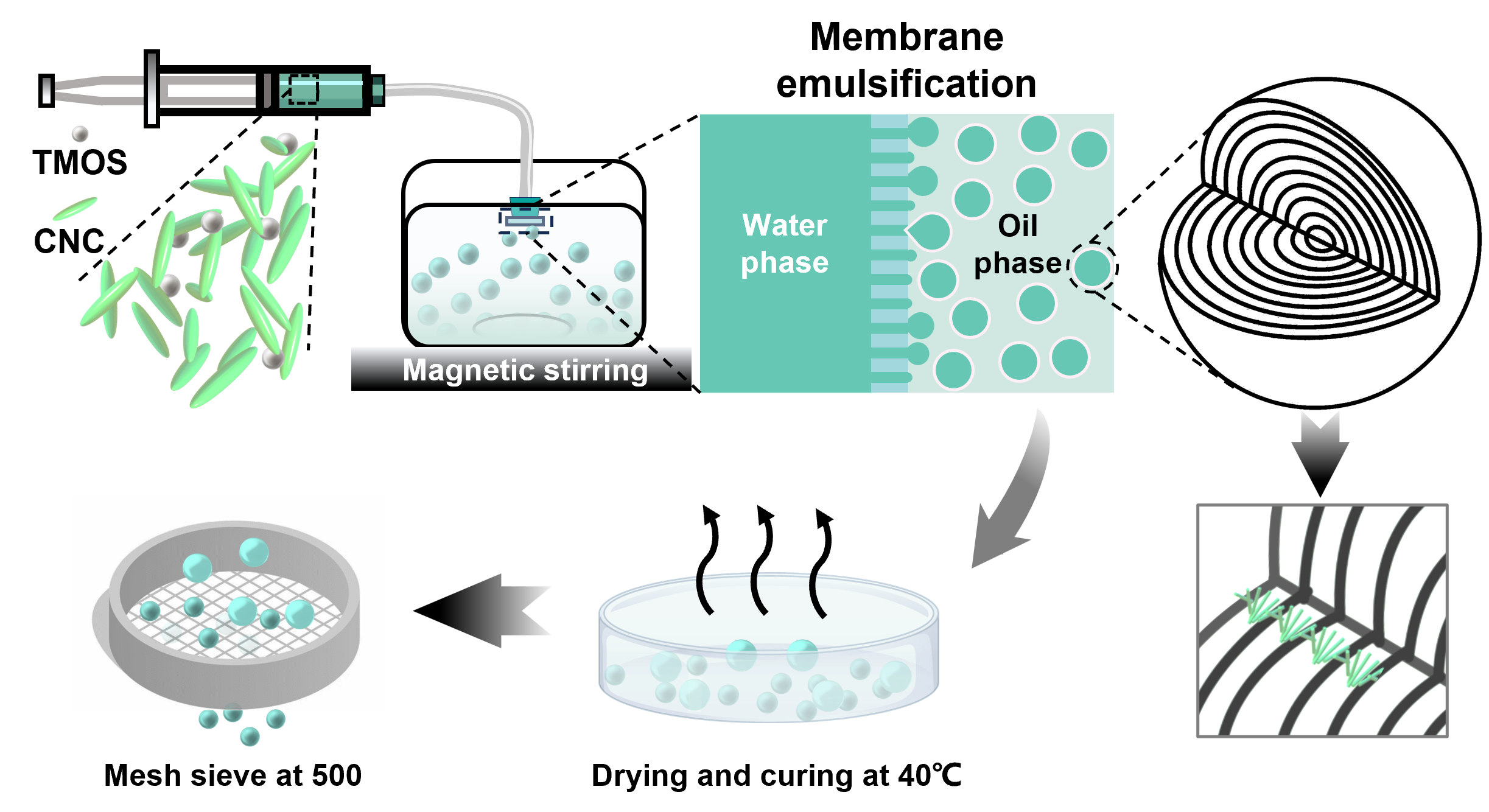Yu Jiaqi, Wang Zhixiang, Chen Sirui, Li Qiongya, Qian Yi, Wang Hao, Huang Yuxiao, Fusheng Zhang* and Guangyan Qing*
Chem. Commun., 2024, 60, 5856-5859.
https://doi.org/10.1039/D4CC00120F
Recently, the team of Qing Guangyan, a researcher from the Bioseparation and Interface Molecular Mechanism Research Group (Group 1824) of the Biotechnology Research Department of Dalian Institute of Chemical Physics, proposed a simple and universal synergistic strategy - combining evaporation-induced self-assembly and membrane emulsification technology to achieve large-scale preparation of cellulose nanocrystal-derived cholesteric phase helical microspheres. At the same time, this spherical topology can be transferred to mesoporous silica microspheres and mesoporous carbon microspheres through templating.

In recent years, the design and control of cholesteric liquid crystal self-assembly into complex hierarchical structures has attracted widespread attention. Inspired by the biogenic cellulose with cholesteric phase helical structure in plant cell walls, cellulose nanocrystals (CNCs) can spontaneously assemble to form chiral nematic structures through room temperature evaporation-induced self-assembly. CNC-derived biomimetic photonic materials have made many advances in applications such as optics, sensors, coatings and cosmetics due to their unique photonic properties. However, due to the Plateau-Rayleigh instability, CNCs usually self-assemble to form only thin films rather than continuous geometric topological structures such as spheres. Therefore, how to solve the efficient, large-area production and long-range ordered structure retention of chiral nematic droplets or microspheres is a long-standing dilemma. To this end, we use membrane emulsification technology coupled with evaporation-induced self-assembly process to achieve large-scale preparation of cholesteric helical microspheres, silicon microspheres or carbon microspheres with uniform size, concentric order and large specific surface area. This work is expected to promote the application of new topological materials of nanocellulose in chromatography, medicine, photonics, electronics, catalysts and energy storage.
The related results were recently published in Chemical Communications, and the first author of the article is Yu Jiaqi.